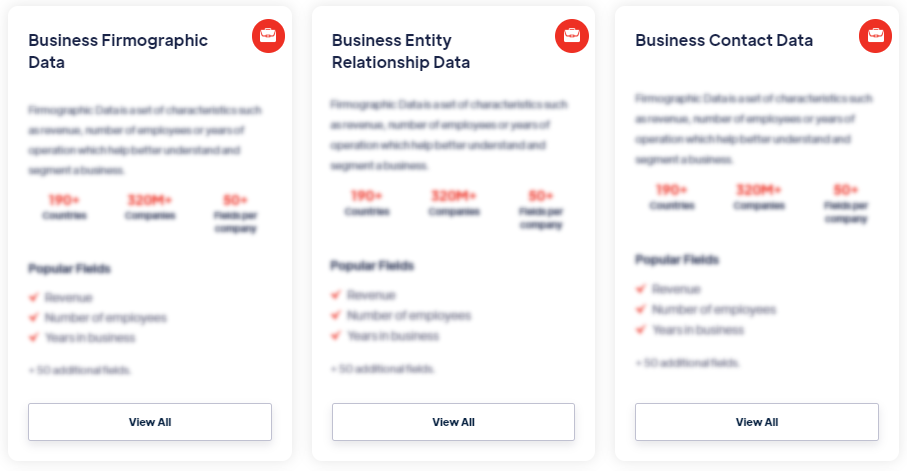Best
Hadoop
Products
Hadoop is an open-source framework designed for distributed storage and processing of large datasets across clusters of computers. It provides a scalable, reliable, and cost-effective solution for big data processing. Hadoop consists of two main components: the Hadoop Distributed File System (HDFS) for storing data across multiple nodes, and the MapReduce framework for parallel processing and analysis of the data. Read more
Our Data Integrations


Request Data Sample for
Hadoop

Browse the Data Marketplace

Frequently Asked Questions
1. What is Hadoop?
Hadoop is an
open-source framework designed for distributed storage and
processing of large datasets across clusters of computers. It
provides a scalable, reliable, and cost-effective solution for
big data processing. Hadoop consists of two main components: the
Hadoop Distributed File System (HDFS) for storing data across
multiple nodes, and the MapReduce framework for parallel
processing and analysis of the data.
2. Why is Hadoop important?
Hadoop is
important because it allows organizations to store, process, and
analyze vast amounts of data efficiently. It enables the
processing of data in parallel across multiple nodes, which
significantly improves the performance and scalability of
data-intensive tasks. Hadoop is widely used for big data
analytics, machine learning, data warehousing, and other
applications that require handling and analyzing large datasets.
3. What are the key features of Hadoop?
Key features of Hadoop include scalability, fault tolerance,
flexibility, cost-effectiveness, and parallel processing. Hadoop
can scale horizontally by adding more nodes to the cluster,
ensuring data reliability and availability even in the event of
node failures. It can process various types of data, including
structured, semi-structured, and unstructured data. Hadoop runs
on commodity hardware, making it a cost-effective solution. The
parallel processing capabilities of Hadoop enable high-speed
data processing and analysis.
4. How is Hadoop used?
Hadoop is used for
various applications such as big data analytics, data
warehousing, machine learning, log processing, and clickstream
analysis. It enables organizations to analyze large volumes of
data, store and process structured and unstructured data, train
and deploy machine learning models, process and analyze log
files, and understand user behavior through clickstream
analysis.
5. What are some popular tools and technologies in the Hadoop
ecosystem?
The Hadoop ecosystem consists of various tools and technologies
that enhance the capabilities of Hadoop. Some popular examples
include Apache Hive, Apache Pig, Apache Spark, Apache HBase, and
Apache Kafka. These tools provide functionalities such as
SQL-like querying, high-level scripting, in-memory data
processing, distributed database access, and distributed
streaming.
6. What are the benefits of using Hadoop?
Using Hadoop offers benefits such as scalability,
cost-effectiveness, flexibility, fault tolerance, and parallel
processing. Hadoop can handle massive amounts of data by
distributing the workload across multiple nodes, running on
commodity hardware and open-source software. It can process
various types of data from diverse sources, ensuring data
reliability and availability. The parallel processing
capabilities of Hadoop enable faster data processing and
analysis.
7. What are the challenges of using Hadoop?
Using Hadoop comes with challenges such as complexity, data
management, programming model, and integration with existing
systems. Setting up and managing a Hadoop cluster requires
technical expertise. Proper data management, including
partitioning, distribution, and replication, is crucial for
optimal performance and data reliability. Developing MapReduce
programs or using Hadoop-related technologies may require
specialized programming skills. Integrating Hadoop with existing
systems can be challenging and requires compatibility and data
integration considerations.
